Art Therapy as Part of Psychotherapy
by
Dany Ghassan Charbel, MSC, psychotherapist
Robert Gorter, MD, PhD, Professor of Medicine, etc.
GURU BRAR (INDIA)
Definition of the Word Art in Greek Culture
The word art is derived from the Greek term techne, or techne, (τέχνη), meaning, craft, technique, or skill, and plays an important role in ancient Greek philosophy (in, for instance, Xenophon, Plato, Aristotle). Here in the word techne, we see the embryo of what was to become technology.
History of Art
The origins of art history can be traced back to the Prehistoric Era before written records were kept. The earliest artifacts come from the Paleolithic Era, or the Old Stone Age, in the form of rock carvings, engravings, pictorial imagery, sculptures, and stone arrangements.
They are not static artworks; they were likely the focal point of other activities, using fire along with sound and movement to create a collaborative experience that would contribute to a sense of community and magical control over the environment, represent the strivings of the human imagination to comprehend and control its environment.
Egypt in the days of pyramid building was still essentially a Stone Age culture, ruled by semi-divine kings whose massive monuments have survived to this day. The theme of the ruler, who is part divine, part human, continued to develop throughout Bronze Age Egypt and most of the ancient world.
Many monuments and reliefs were dedicated to the elite as ruling intermediaries between heaven and earth. They were essential to the continuing triumph of order over chaos, an idea that is expressed in the art of many cultures again and again. As time passed, ordinary people began to acquire concepts that were previously only available to the elite, such as the idea of life after death. These themes were reinterpreted in their own tombs.
Until European explorers set out across the oceans and discovered new cultures, views on the nature of art were those of the known world, encompassing the Mediterranean, North Africa, Syria, Anatolia, Persia, and eventually, Northern Europe and Scandinavia. However, the magical power of art was not confined to these regions.
From China to the cultures of South America, magical art and artifacts were produced for semi-divine rulers to ensure not only their own existence in the afterlife but also the continuance of cosmic harmony in the world of the living. Magic, the gods, and their relationship with humans were expressed in art and architecture for both the living and the dead.
Era of Renaissance
The Renaissance is often seen as representing not only the restoration of the principles of the art of classical antiquity, but also the maturing of art forms. Perhaps the true triumph of the Renaissance is its harmonization of sacred and secular themes. Much of Renaissance art was inspired by – and financed by – powerful wealth-creating families and individuals.
Renaissance artists frequently expressed the authority of these influential personages through the use of religious themes and imagery. The most audacious of these works of art is Benozzo Gozzoli‘s “Journey of the Magi to Jerusalem” which is essentially a “who was who” of the court of Lorenzo the Magnificent, represented as the entourage of the Three Wise Men.

Leonardo DaVinci
The Renaissance also marked the beginning of scientific thought, with the visionary works of Leonardo da Vinci and his experiments with anatomical drawing. Even as the Renaissance flourished, the seeds of religious and secular change were being planted, particularly in northern Europe.
Art Therapy
Art therapy is a form of psychotherapy involving the encouragement of free self-expression through painting, drawing, modeling, speech formation, singing, music, and movement, used in remedial or diagnostic activities.
The Work of Art Therapy
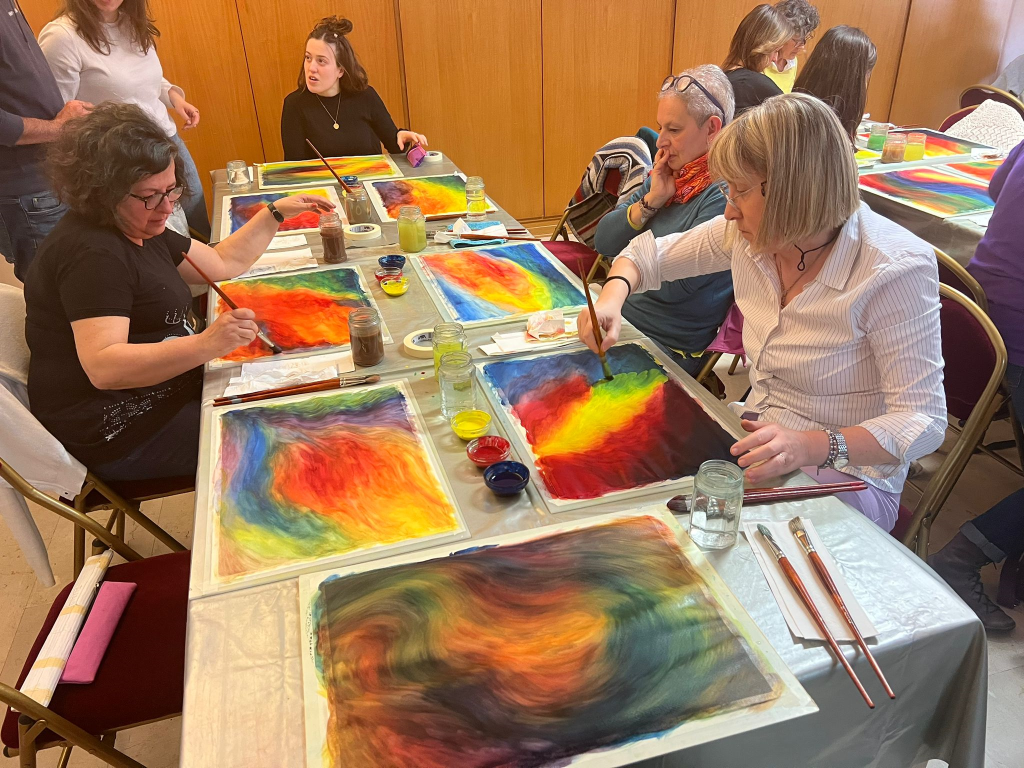
Improving cognitive and sensorimotor functions, fostering self-esteem and self-awareness, cultivating emotional resilience, promoting insight, enhancing social skills, increasing social awareness, and reducing and resolving conflicts and distress.
Visual therapeutic arts tap into one’s creativity, this inner source of life forces. The possibilities are as limitless as creativity itself. William Blake called art “the tree of life”; art indeed has a profound effect on us. Already through simple exploration of art materials, our senses are stimulated and here, we can engage in our very own individual way. Different colors, their interplay, emerging shapes, lines, light, and darkness, or manipulating soft, moist clay inspire our minds, soul, and spirit. Art has both a physical and a psychological effect on us.
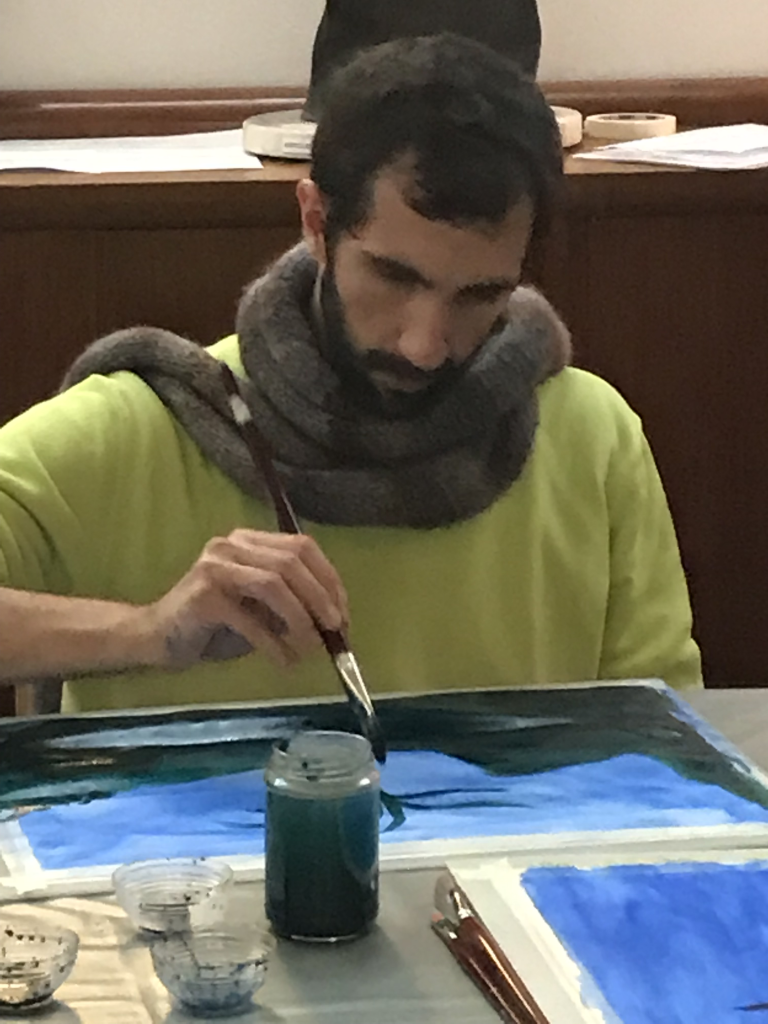
Therapeutic Speech and Therapeutic Music and Singing
Therapeutic speech is part of the holistic health care model practiced in Anthroposophic medicine. It is an interactive therapy that engages the forming forces of speech and voice, including sounds and rhythms of language, gesture, movement, and – underlying all – the breath. Through this creative media Therapeutic Speech stimulates the natural healing processes in the human being toward a reestablishment of a healthy balance and wholeness.
Therapeutic Music is a Music-Centered Approach.
It is fundamentally focused on facilitating and deepening musical experiences. No previous musical skills or knowledge, virtuosity, or mastery of an instrument is required. Therefore, mainly easy-to-play instruments are used. Percussion, string, plucked, and wind instruments are specifically selected, as well as the most precious of all instruments – the human voice. Many of the musical instruments are distinctly anthroposophic instruments, such as the lyre and chrotta, swinging metal rods, particular wind instruments, and a large variety of other musical instruments.
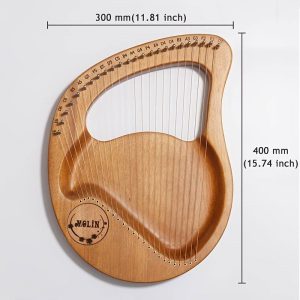
An example of a 24-string Lyre
Therapeutic Singing engages the human voice as a healing modality, working with breathing and a wide range of exercises. Also, singing in a choir has been proven to be very therapeutic.
A study of women with cancer engaging in different types of visual arts, including card-making, collage, pottery, watercolor, and acrylics found four types of benefits:
1) it helped them focus on positive life experiences and reduce focus on their cancer;
2) enhanced their self-worth and identity through challenge and achievement;
3) allowed them to maintain a social identity not related to cancer;
4) allowed them to express their feelings, especially related to chemotherapy.
Another study of women with cancer found reduced emotional distress and decrease in physical symptoms and a general improvement in their Quality of Life with the use of art therapy.
In the psychodiagnostic assessment for children, the family drawing test of the French psychologist Louis Corman (1901-1995), allows the clinician to gain a better understanding and awareness of the child’s perception of itself, the child’s perception of its parents, family interaction and family dynamic issues.
Carl Jung and Mandalas
Mandalas are an archetypal symbol of wholeness and were used as therapeutic art tools by psychologist Carl Jung, who showed that creating Mandalas helped patients to make the unconscious more conscious.
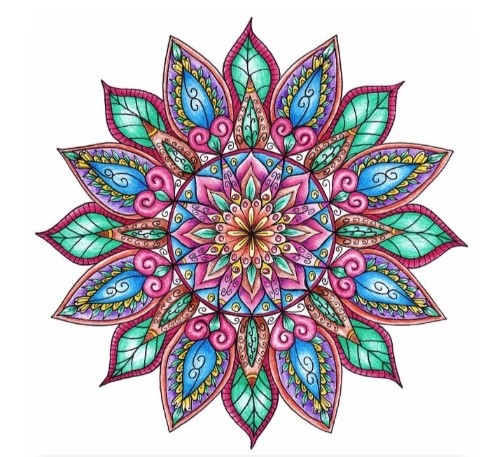
Example of a Mandala
Mandalas are complex arrangements of patterns or pictures used in Hindu and Buddhist Tantrism to represent the cosmos (or “wholeness”) and to give expression to the infinite possibilities of the human subconscious.
In yoga practices, mandalas can be a support for meditation or an image that must be internalized through mental absorption. This image organizes the inner energies and forces of the practitioner and puts them in a relationship with his ego-consciousness.
Generally speaking, a mandala is a geometrical form – a square or a circle – abstract and static, or a vivid image formed of objects and/or beings.
Art Therapy in a Group
Art Therapy in a group offers a different experience from one-to-one work because the group creates and offers its own unique dynamic. Group members have individual reactions, thoughts, and comments that only arise in this setting.
Sometimes, it is useful for groups of people who are strongly involved or attached to each other to work together therapeutically. This may be a whole family, siblings, a caregiver, and the cared-for, couples or any other combination of other significant relationships. This can be a useful way to explore team dynamics and enable a safe expressive space to explore emotions and reactions that arise for and within these relationships. As people become more empowered within their own care and health provisions to employ their own support workers, etc., these styles of reflective groups may be of benefit for lone workers to come together with others to explore their experiences and validate their feelings, enabling continued energy and resilience for their caring work. Adoption and looked-after child services might use this as well as individual therapy format.
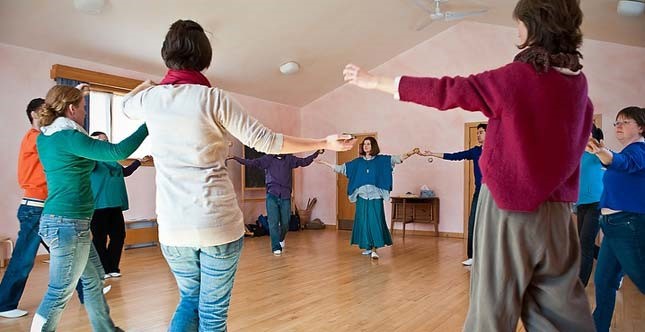
Eurhythmy can be done in one-to-one therapeutic sessions (curative eurhythmy)
or in a group (schools, at work, etc.)
Some common reasons for establishing an Art Therapy group are listed below:
- Facilitates social learning in a supportive environment through cooperation and communication
- Individuals with similar experiences can provide support to each other through listening and sharing strategies to help with problems
- Members can learn from the collective experience and feedback of other members
- Exercises can be developed that take advantage of the number of people in a group (eg. role-playing)
- Individuals can feel empowered by their success in developing interpersonal skills within the group.
- Increase social awareness and enhance social communication skills within the group.
Art Group Therapy for Children and Teenagers who have an Autistic Spectrum Disorder and for their Parents
A study conducted by Tang Yugen at Lesley University, Massachusetts, USA, in May 2023, discussed an approach to expressive arts therapy that involves joint participation by parents and children to utilize expressive arts therapy to enhance parents’ comprehension of their children’s communication styles and to help children with Autism Spectrum Disorder acquire practical communication skills. The study included children between the ages of 6 and 9 diagnosed with Autism Spectrum Disorder and one of their parents. The author gathered information and concluded by process notes, conversations with co-leaders, and final participant interviews. Most children and parents reported experiencing a sense of support and ease within the group. This study demonstrated that when children and parents engage in expressive arts therapy together, they can:
- a) effectively facilitate parents’ comprehension of their children’s self-expression, b) assist parents in learning how to communicate with their children with ASD,
- c) improve children’s communication and self-expression skills, and
- d) foster positive parent-child relationships.
Conclusion:
Art therapy is a helpful tool both in one-to-one therapeutic sessions with a patient as well as in group settings, like in families, at school, at work, etc.
References:
- Gurney, History of art.org.
- Shukla Apoorva, Role of Art therapy in the promotion of mental health, August 2022.
- Jung and Mandala , Carl-Jung.net.
- T, Yuegn, Expressive Art group therapy to improve children with autism’s social and expressive skills and facilitate Parent-child. Lesley University, May 2023.